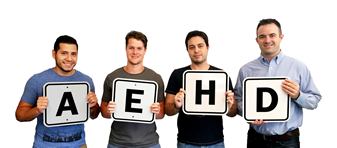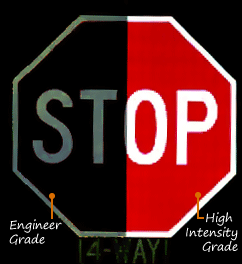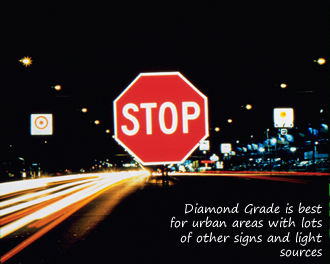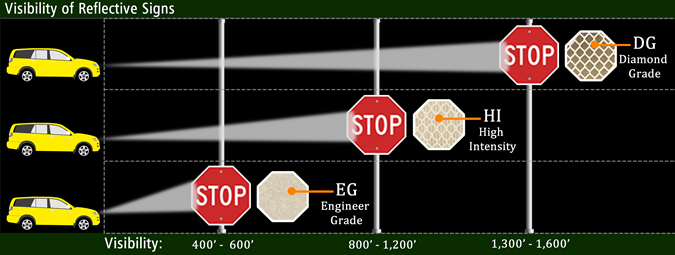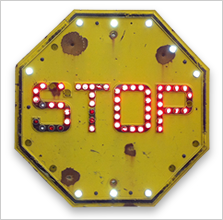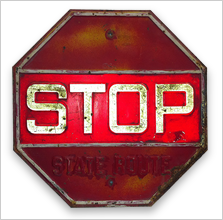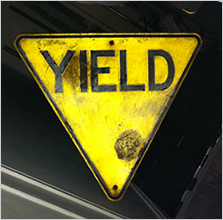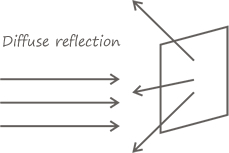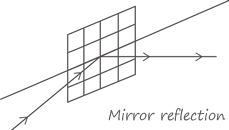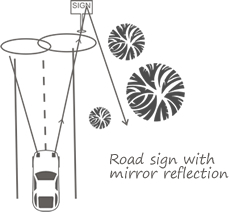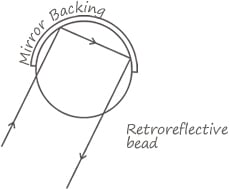Three Types of Reflective Traffic Signs
Compare reflective signs with non-reflective aluminum.
-
3M Engineer Grade Reflective Signs. Standard reflective signs and the most commonly used in parking lots for parking signs 7 to 10 year outdoor life.
-
3M High Intensity Grade Reflective Signs. Offers superior reflectivity, especially when approached at an angle. These signs have a 10 year warranty for outdoor life. These sign use cube-corner or prismatic material. This is the most common material for Stop Signs.
-
3M Diamond Grade Reflective Signs. This is the brightest and most durable sign material, with a 12 year warranty for outdoor life. These offer superior visibility when approached from an angle. They are also prismatic. These are best for visually cluttered urban environments.
Visibility of Reflective Traffic Signs at Night
Reflective Traffic Signs - Historicals
At first glance, it may not seem like much has changed over the last few decades in the world of traffic signs. Stop signs are still octagons, one way signs are still standard black-and-white arrows with text, and yield signs are still inverted triangles. But that doesn’t tell the whole story. Colors have changed and materials have changed. What initially seems as an unchanging façade of standardized road signs belies the technological progress that has been made.
What is Retroreflectivity?
One of the major arenas in which progress has been made is reflection. Road signs today are far more reflective than their lackluster predecessors. Thanks to recent improvements, high-quality signs glow at the sides of roads like proverbial North Stars, and as a result, it is much safer to drive at night than it was in the past.
Making road signs reflective is not as straightforward as it might seem. One of the main challenges is to make sure that light is reflected back towards its source. That may sound easy, but it is not. Let us explain.
Light reflects off different materials and surfaces in different ways. In general, there are three kinds of reflection: diffuse reflection, mirror reflection, and retro-reflection. Road signs are only useful at night if they are retroreflective.
Diffuse reflection occurs when light strikes a rough or granular surface, such as cloth or paper, and scatters in different directions, causing a concentrated beam of light to become diffuse or spread out. A good example of diffuse reflection is the reflection that occurs when light strikes a mat surface. The light beams hit the mat surface and bounce off it in different directions, creating a soft, unfocused reflection.
Mirror reflection occurs when light strikes a surface that is smooth or glossy, such as a mirror. Light reflects off such surfaces at equal but opposite angles, and the reflected beam of light remains focused and concentrated, creating a ‘sharp’ reflection.
Here’s where we come to our first hurdle. If road signs reflected light the way mirrors reflect light, you would not be able to see them at night. When you drive past a road sign at night, the sign is usually located to the right or the left of the road.
In both situations, the light from your headlights strikes the sign at an angle. If road signs were made from regular reflective materials, the light from your headlights would bounce off them at equal but opposite angles and end up illuminating the trees beside the road. Very little or no light would reach your eyes, and you would not be able to read the sign. But road signs don't reflect light the way mirrors do. They reflect light retroreflectively.
Retroreflection is the same as mirror reflection with one major difference; light beams that strike a retroreflective surface bounce back in the same direction as they came. For the most part, retroflection is achieved in two different ways. Three mirrors arranged perpendicularly into a ‘cubes corner’ will return light directly to its source, as will a transparent sphere backed by a spherical mirror.











